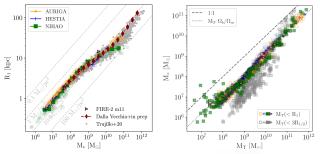Rotation plays a key role in the life cycles of stars with masses above 8 Msun. Hence, accurate knowledge of the rotation rates of such massive stars is critical for understanding their properties and for constraining models of their evolution.
This paper investigates the reliability of current methods used to derive projected rotation speeds v sin i from line-broadening signatures in the photospheric spectra of massive stars, focusing on stars that are not rapidly rotating.
We use slowly rotating magnetic O-stars with well-determined rotation periods to test the Fourier transform (FT) and goodness-of-fit (GOF) methods typically used to infer projected rotation rates of massive stars.
For our two magnetic test stars with measured rotation periods longer than one year, i.e., with v sin i < 1 km/s, we derive v sin i ~ 40-50 km/s from both the FT and GOF methods. These severe overestimates are most likely caused by an insufficient treatment of the competing broadening mechanisms referred to as microturbulence and macroturbulence.
These findings warn us not to rely uncritically on results from current standard techniques to derive projected rotation speeds of massive stars in the presence of significant additional line broadening, at least when v sin i <~ 50 km/s. This may, for example, be crucial for i) determining the statistical distribution of observed rotation rates of massive stars, ii) interpreting the evolutionary status and spin-down histories of rotationally braked B-supergiants, and iii) explaining the deficiency of observed O-stars with spectroscopically inferred v sin i ~ 0 km/s. Further investigations of potential shortcomings of the above techniques are presently under way.
Advertised on
References


